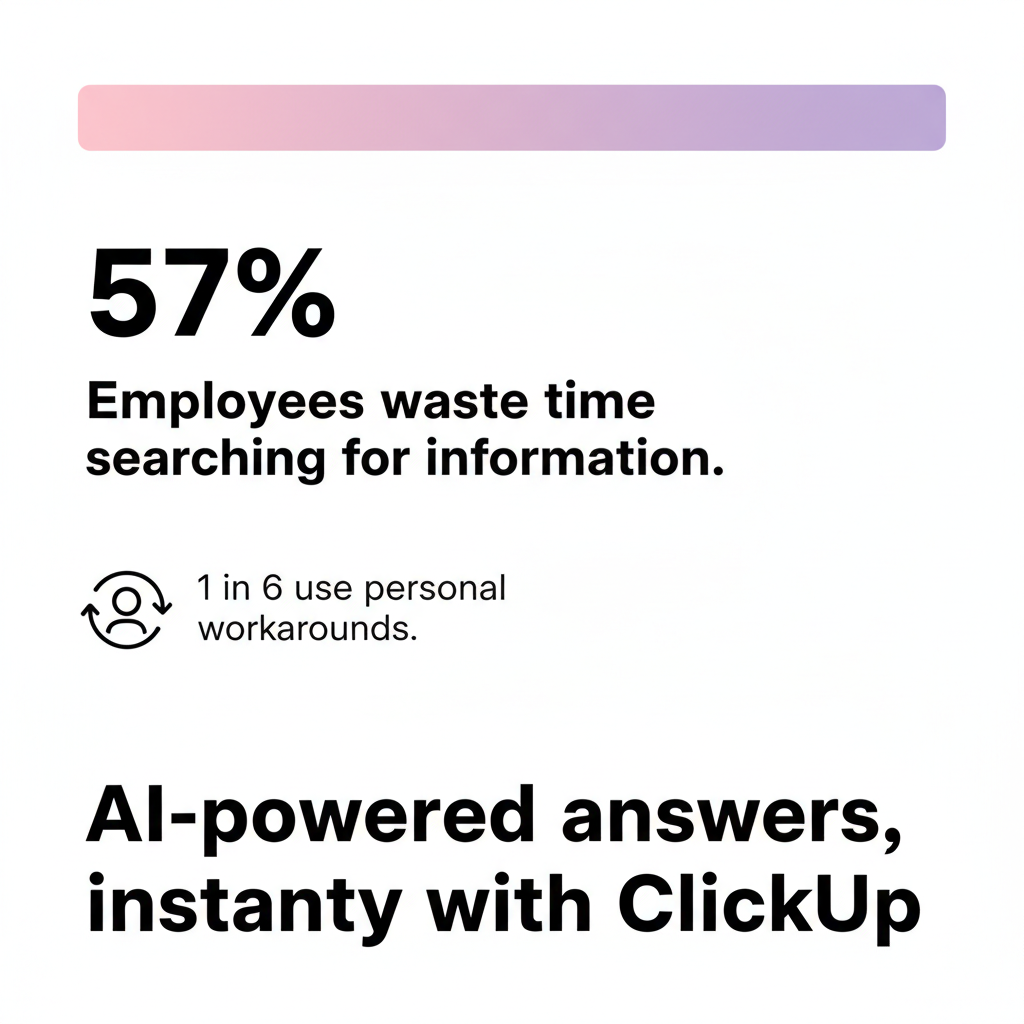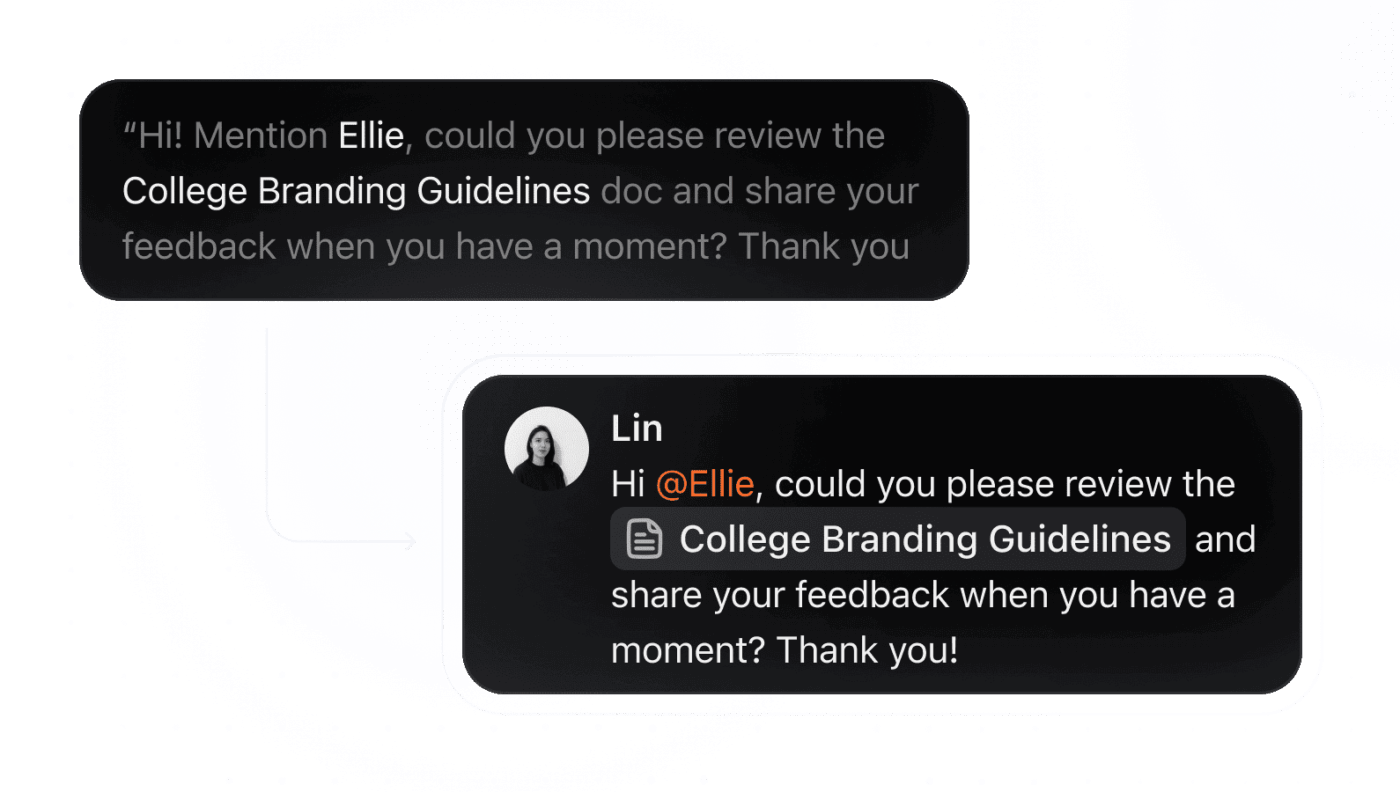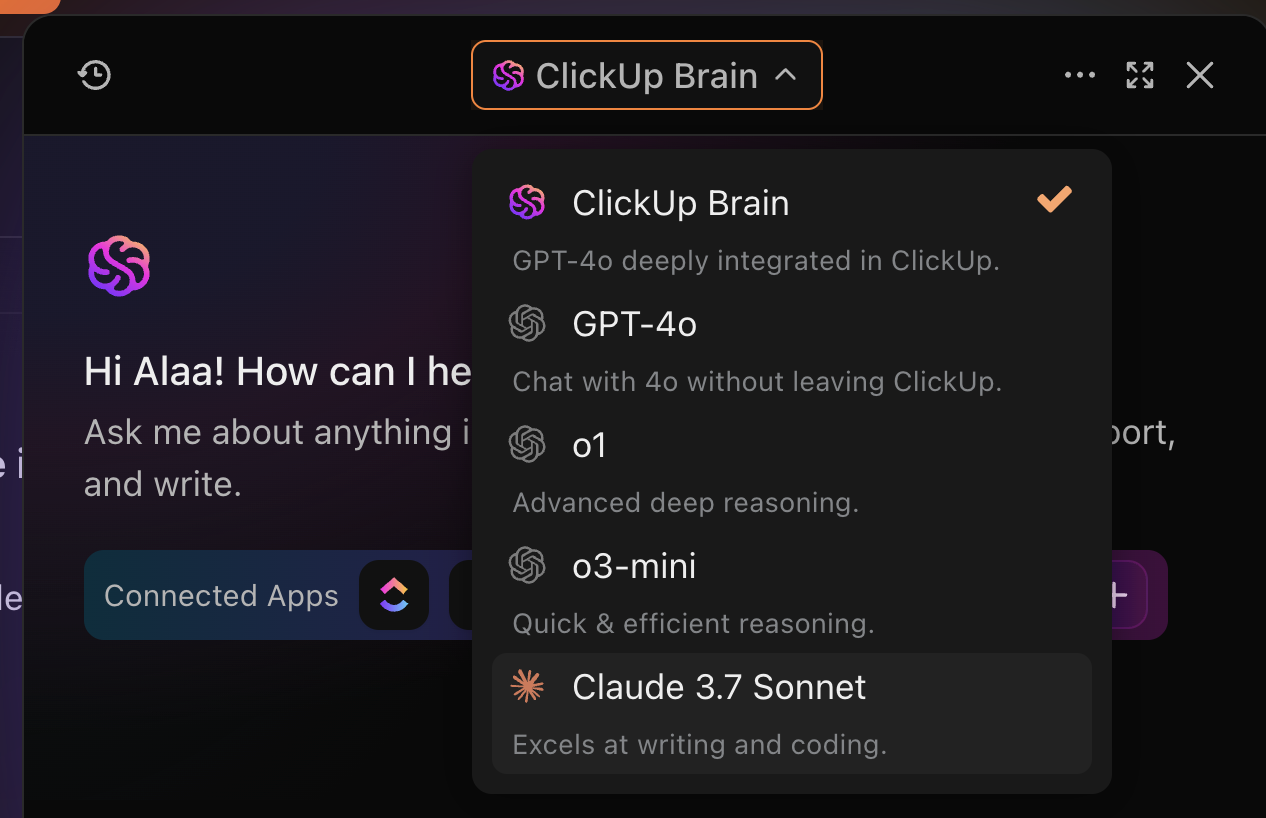Beyond the Chatbot: Why Real AI Transformation Requires Codifying Your Best People

Sorry, there were no results found for “”
Sorry, there were no results found for “”
Sorry, there were no results found for “”

There’s a fundamental misunderstanding about what AI Transformation actually means. This confusion is costing companies the competitive advantage they think they’re building.
Most leaders believe AI is primarily useful for rote, mundane tasks. They see it as a means to eliminate the boring, repetitive stuff, so humans can focus on the “real work.” While there’s truth to that surface-level value, it’s an incomplete picture that misses the transformational potential entirely.
McKinsey estimates productivity gains of up to 45% in core functions where AI is deeply embedded.
A truly AI-native company doesn’t just automate simple tasks. It captures the domain expertise of its best human strategists and codifies that expertise using AI.
Let me explain what that means, and why it changes everything.
Here’s a scenario I see play out constantly: A company decides to embrace AI Transformation. They assign a centralized AI team or technical resources to build AI-powered workflows across the organization. These well-intentioned people start creating AI logic to run various business processes.
The problem? They don’t have in-depth expertise in those processes.
Let’s use a simple example from my world in marketing. If someone from IT or a centralized AI team tries to create all the AI logic to run our marketing campaigns, they won’t know enough about the right ways to run campaigns at ClickUp. They won’t understand our best practices, where all the context lives, or how experienced marketers make strategic decisions in the moment.
Centralized AI teams without domain context often create automation that misses the nuance—and the ROI.
The best combination I’ve seen, and the real path to AI Transformation, is when AI experts (internal or external) work closely with domain experts to codify key business-critical processes and ensure they’re running smoothly.
That’s when magic happens. That’s when you achieve true transformation.
Bridging the gap demands close collaboration between AI experts and those who have a deep understanding of the business.
That’s when magic happens. That’s when you achieve true transformation.

The way you know you’ve achieved some form of AI Transformation comes down to leverage. What kind of leverage is every individual human making inside your business?
Imagine a team member is responsible for an end-to-end process. If you can take work off that one person’s plate and deputize AI agents at different stages of that process, what you’ll have is someone who is now responsible for managing a team of agents to execute that process, plus:
These metrics are tangible. They’re measurable. And they’ll show you whether you’re on the right path or just creating AI theater.
Less context leads to poor AI outputs, eroding trust and fueling even more tool sprawl. True AI transformation requires breaking this loop by embedding domain expertise directly into your workflows. Ready to drive real results? Explore the Strategic Initiative Execution AI Playbook to see how you can turn strategy into action with AI!
Everyone wants to draw parallels between AI Transformation and digital transformation. But I think there’s a more interesting comparison that reveals something critical about the moment we’re in.
Many industries and verticals never really transformed digitally.
I know the supposition is that digital transformation is “over,” but that’s not correct. You still see companies across many sectors that never fully realized the benefits of what was promised.
Think about how the internet rolled out. In the late 1990s and early 2000s, the required infrastructure was incredibly expensive and labor-intensive.
The result? Many companies and regions got left behind because they didn’t have the resources, the infrastructure, or the organizational capacity
Fast forward ten years, and mobile changed everything. Mobile put the internet in everybody’s hands without requiring nearly as much robust infrastructure. Entire areas of the world skipped a generation of technology and got internet access immediately. Then they were off to the races.
The same thing is happening with AI Transformation. There are industries and companies that have never truly adopted or reaped the benefits of digital transformation. Instead of going through the time and labor-intensive process of, say, digitizing their company, there’s now an opportunity to fundamentally rethink what a tech-enabled company should be in the age of AI.
Companies can create custom software solutions more quickly and easily than ever before. They can achieve true transformation by skipping steps they would have otherwise had to take.
That’s the parallel worth paying attention to. That’s the opportunity leaders need to seize.
A ClickUp survey recently unearthed that 45% of knowledge workers have considered automation but haven’t started—highlighting the gap between intent and action in most organizations.

When people ask whether AI Transformation is primarily technical or cultural, the answer is unequivocally both. Any technology is doomed to fail without effective change management, cultural buy-in, and top-down enforcement.
It’s very easy for people to be intimidated or scared of new technology and change, especially if they don’t understand their role or how they’ll contribute moving forward.
This is why working with domain experts is so critical. When you’re bringing AI Transformation to life, people need to understand they’re not coding themselves out of a job or AI-ing themselves out of a role. They need clarity on their role in this new paradigm.
Here’s where most companies typically go wrong with their framing. They focus on eliminating rote, mundane, and repetitive tasks. While that’s part of the value, it does a disservice to the technology’s capabilities. And honestly, it’s not that exciting for people.
The real transformation is about unlocking people’s time, energy, creativity, and strategy to do work they want to do but have never been able to do. Not because they didn’t want to, but because they couldn’t.
That frame matters enormously. That’s how the technical and cultural dimensions successfully intersect.
💡 Pro Tip: Frame AI adoption as liberation, not elimination—freeing teams to do strategic work instead of repetitive tasks.
I’ll be honest: When ChatGPT was first released in late 2022, I thought it was impressive. It seemed like a fun toy. But I didn’t understand what the real value could be.
It didn’t click until I saw multi-step, complex workflows where you could stitch together AI with core work tools.
It wasn’t about just getting an answer on demand, or synthesizing information, or writing mediocre copy. It was about being able to provide robust instructions to AI and integrate it with the systems where work actually happens.
From a sales and marketing standpoint, this meant integrating AI outcomes and outputs with CRM, marketing automation, sales automation, and sales engagement tools to genuinely improve the lives of sales and marketing professionals.
The light-bulb moment for me was realizing that even the most complex workflows can be codified.
AI isn’t just useful for getting from A to B—it can capture the entire journey from A to Z.
I felt my perspective shift when I saw how push-based AI changes the dynamic. When workflows are deeply integrated, AI doesn’t wait to be queried; it delivers context and action directly to where people already work—no chatbot detour required.
When a team member asks about key project details—like the expected go-live date for a product launch—ClickUp Agent instantly surfaces the answer from relevant discussions and documentation. In this example, the AI Agent provides a clear, contextual response:

I grew up in software through business intelligence (BI), and I see significant parallels in the AI era. One of the main challenges with BI is that people often struggle to identify the right questions to ask. That’s the most challenging aspect of analysis. It’s also the most challenging aspect of engaging effectively with AI.
If you log into ChatGPT, see a blinking cursor and think, “What do I do now? Write me a haiku?” Then, that’s not the way to make AI work for you.
Being able to codify workflows, preset the questions people should be asking about their business, and serve that information where they already are—that’s what changes everything. They don’t need to know that AI powered it; they just need the output. And they need to work more quickly as a result.
That workflow orchestration capability continues to shape how I think about AI today.
The bold move leaders need to make is deceptively simple: Move.
I know that sounds almost silly, but there’s a real competitive advantage to moving fast, and moving fast in the right way. Speed and direction both matter.
You need to ensure your context is coming together so you have assurance that the outputs AI creates are actually contextualized to what matters to your business.
Then you need to ensure the right people across your company, those with real expertise who know what best practices look like, are leaning in to codify the AI agents and workflows you’re creating.
More than half of employees (57%) waste time searching through docs or knowledge bases to find information. When they can’t, 1 in 6 resorts to old emails, notes, or screenshots just to piece things together. ClickUp Brain ends the search with instant, AI-powered answers from your entire workspace and connected app ecosystem—so you get what you need, every time.

Here’s where ClickUp fundamentally differs from standalone AI tools: We’re aggregating all the context.
We know how you work. We know your people. We know how you get work done. We know the permission structure of your team, so people only see what they should see. We know your business.
ClickUp Brain MAX deeply understands your team, documents, and permissions. With its talk-to-text capability, you can simply speak your request, and ClickUp Brain MAX instantly transforms it into a perfectly formatted, actionable message—automatically mentioning the right person and linking the correct document.

That’s a massive advantage from privacy, security, and trustworthy output standpoints.
Using AI isn’t just about scaling output or maximizing quantity; it’s also about enhancing quality with complete trustworthiness. If you’re trusting AI to run business-critical functions—as you should, and as ClickUp can power for you—you need to trust the quality of those outcomes.
Standalone tools like ChatGPT, Gemini, Claude, or even Copilot are siloed. They’re now adding lightweight project management features because they’ve realized there’s no value in asking AI questions if you can’t use that content to move the needle on your tasks, projects, docs, and so on.
However, those tools remain fundamentally disconnected from where your work actually takes place, leading to Work Sprawl—tasks, updates, and knowledge scattered across multiple platforms.
ClickUp Brain exists within your work management platform, where you plan, do, and discuss work. You can embed AI in workflows. Ambient agents can answer questions, identify related tasks, advance workflows, and create new work, and often without users even realizing they have triggered something.
Within the prompt or interaction field in ClickUp Brain, simply use the dropdown to choose your preferred model—options include GPT, Claude, or even Gemini, and more, depending on your subscription and integrations.

That’s the power of a Convergence AI Workspace. That’s what enables true AI Transformation.
A true AI Transformation isn’t measured by how many AI tools you’ve purchased or how many “AI initiatives” you’ve launched.
It’s measured by leverage—by how much more your top talent can accomplish when their expertise is captured, codified, and scaled through AI agents.
For example, the ClickUp Agent instantly assigns tasks to the right person based on chat involvement, without waiting for manual input. This allows your experts to focus on high-impact work, while their knowledge and decisions are seamlessly scaled across the team. That’s the power of true AI transformation—turning expertise into action, automatically.

It’s measured by the quality and trustworthiness of the outputs your organization produces when AI operates with full business context, rather than being isolated in a chatbot interface.
And it’s measured by whether your teams are doing work they’ve always wanted to do but never had the time, energy, or capacity to accomplish.
That’s the transformation worth pursuing. That’s the competitive advantage that will separate leaders from laggards in the AI era.
The companies that will thrive aren’t the ones experimenting with AI in isolation. They’re the ones bringing together domain expertise, workflow orchestration, and converged context to fundamentally rethink how work gets done.
The question isn’t whether to transform; it’s how to do it. It’s whether you’ll move fast enough to lead the transformation or watch your competitors pull ahead while you’re still figuring out what questions to ask your chatbot.
Discover the AI Transformation Matrix: Assess your organization’s current state and map your path to Ambient AI.
See ClickUp Brain in action: Experience how converged context enables trustworthy, business-critical AI outcomes.
Connect with our team to explore how you can codify your domain expertise and orchestrate AI-powered workflows.
Kyle Coleman is Global VP of Marketing at ClickUp, where he leads go-to-market strategy and helps organizations understand how to achieve real AI Transformation. With deep experience in sales, marketing, and business intelligence, Kyle specializes in helping companies codify expertise and orchestrate complex workflows that drive measurable business outcomes.
Codifying expertise means capturing the judgment and strategy of your best people and embedding that knowledge into AI workflows. Instead of automating tasks, you scale human expertise through intelligent systems that execute work the way your experts would.
AI without domain context produces generic results. Domain experts know how decisions are made, what best practices matter, and where exceptions exist. Pairing AI builders with subject experts ensures the automation reflects real business intelligence.
Measure AI transformation by leverage—how much more your people can achieve. Look for faster completion times, higher output volume, improved quality, and measurable efficiency gains across workflows.
ClickUp Brain connects people, data, and processes in one Converged AI Workspace. It captures domain expertise, automates multi-step workflows, and powers AI Agents that execute work directly where planning and collaboration happen.
© 2025 ClickUp